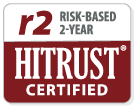Curation Health sat down with our Director of Coding, Jessica Eye, to talk about how the pandemic and value-based care have changed the role of coders and what the future may hold.
CH: First, tell us about your background and experience.
A: I am a certified coder through AAPC. I currently hold my Certified Professional Coder (CPC) and Certified Risk Adjustment (CRC) licenses. I have been coding for roughly ten years. In the past 4-5 years I became very interested in auditing patient records focusing on provider documentation. This piqued my interest in risk adjustment and the value-based world as there is just so much to learn, and we can really make such a difference in the long run. It is an exciting time to be in healthcare with all that has changed over the last decade and even the last year and a half.
CH: What lessons have you learned or seen from COVID-19 related to coding that providers/payers must consider moving forward?
A: I think that providers and payers both have learned the value of telemedicine. This is a service that was rarely used and almost unheard of pre-covid. It is now a common practice/commonly offered service. Thankfully, many payers have changed their requirements for telemedicine, which makes a huge difference in the quality of care for our patient population.
CH: Are there specific things that senior healthcare leadership executives do not understand regarding how clinical documentation must change to align with value-based care initiatives?
A: With the pandemic, I think healthcare leadership and providers alike have realized that a fee-for-service model is not the answer in healthcare. At a time when patients are concerned with the safety and well- being of themselves and their loved ones, value-based care over volume-based services has really been brought to the forefront of healthcare. Coders, the coders in my network, anyway, are used to the everchanging world that is healthcare. They can play a pivotal part in helping to provide education to providers regarding documentation guidelines and practices that are most beneficial in providing quality patient care and patient care outcomes.
CH: In addition to Curation Health’s platform, what technologies would you recommend providers/payers consider as part of their value-based care tech stack and why?
A: I would recommend AHA Coding Clinic, or anything similar. It is a phenomenal resource for coding and documentation rules and guidelines.
CH: Why is coding so critical to claims adjudication?
A: I am sure a lot of people do not realize what a huge role coding plays in healthcare. Coders analyze and ensure that documentation is sufficient and accurate. There are countless rules, guidelines, models, and laws that provider documentation must follow for patients to receive quality care and for claims to be processed timely. Coders ensure all are met and followed, which in turn allows providers to put more focus on patient care, while also lowering the volume of rejections and denials from insurers (faster and more timely payments!).
CH: Why did you join Curation Health?
A: I do not know many people who would not want to be a part of a team like Curation Health. Like I have said, healthcare is ever-changing in all aspects. Being a coder and working closely with providers is exciting in a time when we know we can make a huge impact on the quality of care they are providing patients. Having leadership and coworkers that are equally as excited and passionate, is just an amazing feeling. This team can really accomplish anything.
CH: What about our value/platform appealed to you to be able to help push healthcare forward?
A: One of the things I love about our platform is how user-friendly is for CDIs, Providers, and Coders. From a coding perspective, it is really a fun bridging tool. It provides a great outline that coders can use to guide their audit and documentation review process, which opens doors for any provider queries or education related to risk adjustment that need to happen.

